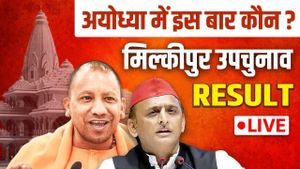The 2025 Delhi Assembly Election results have begun to flow in, showcasing the competitive nature of this year’s race among the principal political parties—the Aam Aadmi Party (AAP), Bharatiya Janata Party (BJP), and Indian National Congress (INC). With the elections held on February 5, 2025, and voter turnout recorded at around 60.54%, the results are pivotal not only for the involved candidates but also for the larger political dynamics of the national capital.
One of the most notable contests is taking place at the Adarsh Nagar constituency, where BJP's Raj Kumar Bhatia faces off against AAP's Mukesh Goel and Congress's Shivank Singal. Adarsh Nagar is one of the 70 assembly constituencies and is well-known for its affluent residential areas, significant market presence, and connectivity via the Delhi Metro. The constituency has seen tight races historically; during the 2020 elections, AAP's Pawan Sharma triumphed with approximately 46,892 votes, narrowly beating Bhatia who garnered 45,303 votes.
Another closely watched seat is Bijwasan, where BJP's Kailash Gehlot currently leads early trends against AAP’s Surender Bhardwaj and Congress's Col Devinder Sehrawat. This seat emerged post-2008 delimitation and includes significant spots like Mahipalpur and Vasant Kunj. The previous elections displayed AAP's Bhupinder Singh Joon winning the seat by just over 750 votes against the BJP, and the BJP is hopeful for reclaiming it, as they have fielded Gehlot once again.
Moving to the Kirari constituency, BJP's Bajrang Shukla is positioned against AAP's Anil Jha Vats, with Congress's Rajesh Kumar Gupta also running for the seat. The competition here is intense, as both AAP and BJP are aiming to exert their dominance. Shukla and Vats are both familiar faces, making this fight one to watch closely.
Mundka, another significant battleground, is witnessing AAP's Jasbir Karala take on BJP's Gajender Drall and Congress's Dharampal Lakra. The 2020 elections saw AAP's Dharampal Lakra winning the seat by over 19,000 votes—a comfortable margin, indicating AAP's strength here. Yet, with fresh candidates from the BJP and Congress, this election may shake things up.
New Delhi, perhaps one of the most prominent constituencies due to its political significance, has AAP leader and incumbent Chief Minister Arvind Kejriwal pitted against BJP's Parvesh Verma and Congress's Sandeep Dikshit, the son of the former Chief Minister Sheila Dikshit. Kejriwal has led AAP since it burst onto the political scene and previously secured victories here, but this moment holds considerable stakes as BJP seeks to reclaim their position after decades. The attention on this high-profile contest could significantly sway overall election trends.
Rithala is yet another noteworthy constituency where BJP's Kulwant Rana is competing against AAP’s Mohinder Goyal. Goyal has held the Rithala seat since 2020 after winning with about 87,940 votes, and hopes to fend off the BJP's challenge again. With voter interest spiking, the contest is shaping up to be competitive.
Model Town is also generating excitement as voters await the results of AAP's Akhilesh Pati Tripathi versus BJP’s Ashok Goel and Congress’s Kanwar Karan Singh. Having been developed by the DLF Group, Model Town has historically been favorable for AAP, with Tripathi winning by over 11,000 votes the last election. His position here seems solid, yet the presence of BJP candidates adds tension to this expected close call.
These early trends being reported indicate fierce competition across multiple constituencies, demonstrating the continued evolution of voter preferences and party strategies as they navigate their campaigns. The results will undoubtedly create ripples throughout Delhi’s political arena, possibly indicating shifts and challenges for each party heading forward.
Overall, the 2025 Delhi Assembly Election results present compelling narratives of ambition, reputation, and voter sentiment, with the potential to reshape the political fabric of the city as these parties vie for relevance and power. With significant stakes on the line, the final outcomes are sure to be closely analyzed, not just for their immediate effects but also for longer-term repercussions within Indian politics.



